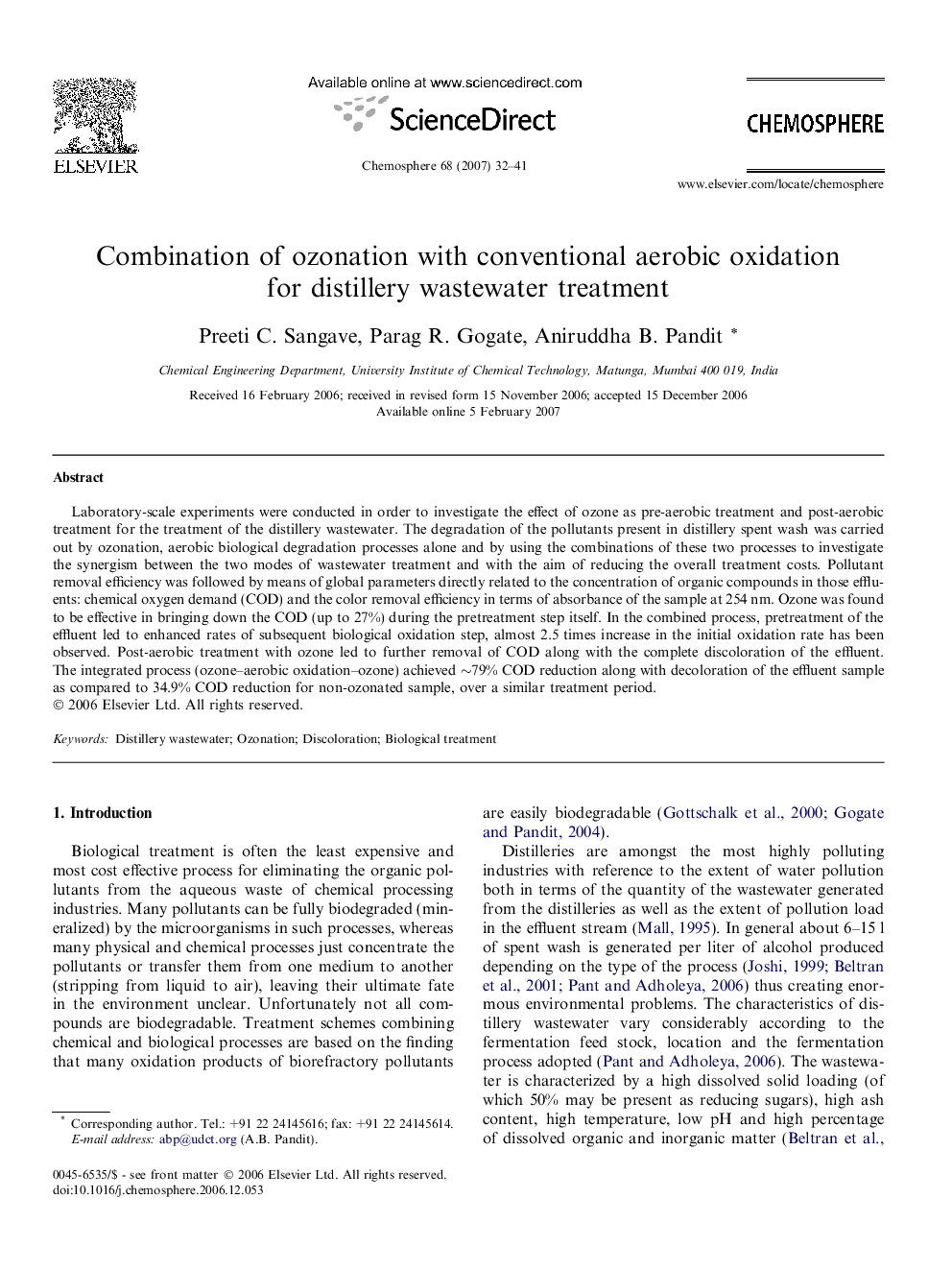| Article ID | Journal | Published Year | Pages | File Type |
|---|---|---|---|---|
| 4414809 | Chemosphere | 2007 | 10 Pages |
Laboratory-scale experiments were conducted in order to investigate the effect of ozone as pre-aerobic treatment and post-aerobic treatment for the treatment of the distillery wastewater. The degradation of the pollutants present in distillery spent wash was carried out by ozonation, aerobic biological degradation processes alone and by using the combinations of these two processes to investigate the synergism between the two modes of wastewater treatment and with the aim of reducing the overall treatment costs. Pollutant removal efficiency was followed by means of global parameters directly related to the concentration of organic compounds in those effluents: chemical oxygen demand (COD) and the color removal efficiency in terms of absorbance of the sample at 254 nm. Ozone was found to be effective in bringing down the COD (up to 27%) during the pretreatment step itself. In the combined process, pretreatment of the effluent led to enhanced rates of subsequent biological oxidation step, almost 2.5 times increase in the initial oxidation rate has been observed. Post-aerobic treatment with ozone led to further removal of COD along with the complete discoloration of the effluent. The integrated process (ozone–aerobic oxidation–ozone) achieved ∼79% COD reduction along with decoloration of the effluent sample as compared to 34.9% COD reduction for non-ozonated sample, over a similar treatment period.
